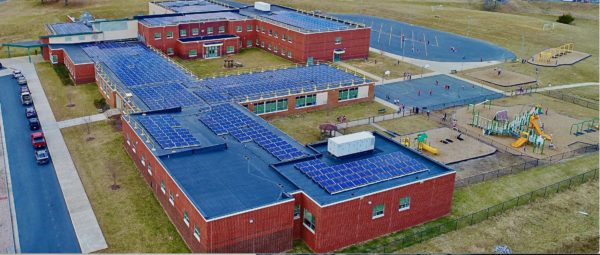Schools from grades K-12 are adopting solar energy at an accelerated pace as they target improved sustainability and reduced energy costs. Since 2015, solar for schools has tripled, and now 9% of schools source electricity from PV, said a report by Generation180.
Energy is second only to teacher salaries when it comes to cost, according to NREL, and U.S. schools spend more than $6 billion a year on the line item. Solar presents an opportunity for schools to alleviate budget pressure, often at little or no upfront cost, freeing up funds for more educational benefits.
Schools often sign a power purchase agreement (PPA) when going solar, allowing the school to buy the electricity produced by the solar installation for 10-25 years at a discounted rate, serving up cost savings from day one The report found that 87% of schools enter third-party power purchase agreements, while the remainder own their systems. Nearly half (47%) of the public schools that have invested in solar are eligible for the Title 1 Schoolwide Program, which serves a large population of low-income students.
“The benefits of solar energy are now reaching a broad range of schools across the country, including schools in under-resourced communities that stand to gain the most from the energy cost savings and educational opportunities that solar technology provides. We are striving for all schools and communities, regardless of their size, geography, or wealth, to have access to clean and affordable power,” said Tish Tablan, lead report author and director of Generation180’s Solar For All Schools Program.
The report found the U.S. is home to 8,409 solar schools, with over 6.1 million students in attendance. Many K-12 schools are giving students hands-on STEM learning opportunities and job training for solar careers, using solar development and installation as a case study. In Denver Public Schools’ Renewable Energy Academy, high school students begin preparing for employment as solar installers. Solar installation is expected to become one of the country’s fastest growing occupations over the next decade.

Schools are also pairing solar with battery storage to manage their energy consumption from the grid and provide back-up power to their buildings. In Albuquerque, New Mexico, the solar and storage under installation at Atrisco Heritage Academy High School will soon enable the school to reduce electricity bills by bringing down peak energy demand. The district plans to make it a resilient campus that can stay open for both students and community members during power outages and climate emergencies.
Across the nation, over 1.6 GW of solar capacity has been installed for schools, enough to power 300,000 homes annually.
“While we’re excited to see growth in solar uptake, too many schools are still missing out. We hope this report inspires more schools to take part in our country’s clean energy transition and enjoy the significant benefits solar brings,” said Tablan.
Generation180 offers guidance for schools interested in solar in its Clean Energy School Leaders Network and providing educational resources and technical assistance. The report website includes an interactive map of solar schools across the nation, along with other resources to help school districts go solar.
The organization also runs a national campaign for solar advocacy, and offers a toolkit as a step-by-step grassroots organizing guide. Once the school district has buy-in from the community, decision makers can use Generation180’s how-to guide for going solar.
In the guide, eight steps are laid out for getting started:
- Assemble a team: include teachers, students, staff from facilities and procurement, and consider help from outside experts.
- Understand energy needs and estimate solar potential: review electricity use history, estimate costs and potential savings, assess site potential and solar output potential.
- Compare financing options: assess ownership options including direct or PPA, and investigate local, state, federal and utility incentives.
- Identify regulatory hurdles: learn local planning and zoning requirements, investigate net metering opportunities.
- Prepare and issue a request for proposal: ensure RFP meets statutory requirements, clearly define the project, and include educational opportunities.
- Evaluate and select the developer: develop a list of key criteria and a scoring plan.
- Oversee construction and installation: hold regular progress monitoring meetings, document regulatory compliance, and perform regular inspections.
- Monitor performance, operations, maintenance: if necessary, develop an operations and maintenance agreement, and ensure ongoing safety of the site.
This content is protected by copyright and may not be reused. If you want to cooperate with us and would like to reuse some of our content, please contact: editors@pv-magazine.com.









By submitting this form you agree to pv magazine using your data for the purposes of publishing your comment.
Your personal data will only be disclosed or otherwise transmitted to third parties for the purposes of spam filtering or if this is necessary for technical maintenance of the website. Any other transfer to third parties will not take place unless this is justified on the basis of applicable data protection regulations or if pv magazine is legally obliged to do so.
You may revoke this consent at any time with effect for the future, in which case your personal data will be deleted immediately. Otherwise, your data will be deleted if pv magazine has processed your request or the purpose of data storage is fulfilled.
Further information on data privacy can be found in our Data Protection Policy.